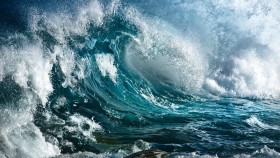ACEAS Seminar Using GRACE/GRACE-FO space gravity data to estimate Antarctic mass balance
Presented by: Dr Rebecca McGirr, ACEAS Research Associate, Australian National University.
The Antarctic Ice Sheet (AIS) is the largest reservoir of fresh water on Earth, containing ~58 m of potential global sea level rise. Increased ice discharge and surface melt has caused the mass of the AIS to decrease, weakening the Earth’s time-variable gravity field in regions of significant mass loss. Changes in the Earth's time-variable gravity field were measured by the Gravity Recovery and Climate Experiment (GRACE) mission over a 15-year period from 2002-2017, while changes in the ice surface elevation have been measured over decades by various radar and laser altimeter missions. The GRACE Follow-On mission and ICESat 2, both launched in 2018, continue to detect persistent AIS mass balance change and sea level rise. In this presentation, I will discuss methods for producing models of the Earth’s temporal gravity field from GRACE and GRACE-FO observations, with a focus on the innovative approach developed by the ANU GRACE group. I will present results from the various GRACE processing centres, with a focus on AIS mass balance and global mean sea level rise. A comparison of GRACE-derived models of Antarctic mass balance and integrated ice heights from satellite altimetry will be presented at the glacier-scale. I will explore the limitations of space gravity observations for measuring AIS mass balance. Specifically, I will discuss the constraints of spatial and temporal resolution and the impact of glacial isostatic adjustments on the accuracy of the mass balance estimates. Finally, I will discuss the outlook for improving estimates of Earth’s time-variable gravity field using GRACE and GRACE-FO observations and the implications for measuring modern AIS mass change.












